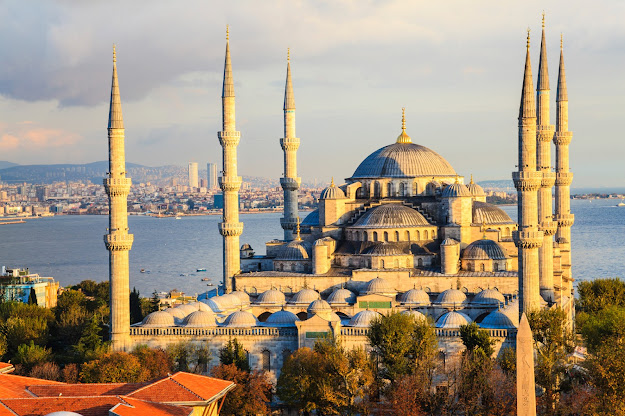what is the history of istanbul
Istanbul in the mirror of history
Istanbul is located on both sides of the southern Bosphorus Strait, making it the only city in the world on two continents. The western part of the city is in Europe while the eastern part is in Asia. The city limits are up to 1,539 square kilometers, while the province of Istanbul covers 5,220 square kilometers.
Historically known as Constantinople, the Turkish city of Istanbul (Turkish: İstanbul, Greek: Konstantinoúpolis, English: historically known as Constantinople) is the largest city in the country and its cultural and economic center. The city is also the capital of Istanbul Province.
Located on the shores of the Bosphorus and its natural harbor, the Golden Horn (Turkish: Haliç), this northwestern Turkish city stretches from the Bosphorus to Thrace in Europe on one side and Anatolia in Asia on the other. It is the only city in the world located on two continents. Istanbul is the only city in the history of the world that has been the capital of three great empires, including the Roman Empire from 330 to 395, the Byzantine Empire from 395 to 1453, and the Ottoman Empire from 1453 to 1923. After the establishment of the Turkish Republic in 1923, the capital was moved to Ankara.According to the 2000 census, the population of the city is 88,03,468 and the total population of the city limits is 118,735.
Thus, Istanbul is the second largest city in Europe. The city has been named the Cultural Capital of Europe for 2010, along with Pax, Hungary and Asen, Germany. Historically, the city has changed many names in terms of culture, language and religion of its inhabitants, including Byzantium, Constantinople and Istanbul. Are known. The city is also called the "City of Seven Hills" because the oldest part of the city is built on seven hills with a mosque on top of each hill.
History
Megara was originally settled by the Greeks in 667 BC and was named Byzantium after its king Byzas. In 1965, the city was besieged and severely damaged in a battle between Septimus Severus and Pescanis Niger. After the conquest, the Roman emperor Septimus rebuilt Byzantium and the city regained its lost glory.
The rule of the Byzantine Empire
Due to the attractive location of Byzantium, Constantine the Great relocated the city to Nova Roma (modern Rome) or Constantinople (after his name) in 330 AD, after he had accurately identified the location in a dream. Nova Roma was never in common use, but Constantinople gained worldwide fame. The city remained the capital of the Eastern Roman Empire until its conquest by the Ottoman Empire in 1453. During the Fourth Crusade, the city was destroyed by the Crusaders during the Byzantine period, and was recaptured by Christian forces under Michael VIII Paleologus in 1261. After the fall of Rome and the Western Roman Empire, the city was renamed Constantinople. Declared the only capital of the Byzantine Empire. The empire became a center of Greek culture and the center of Greek Orthodox Christianity after its secession from Rome. Later many great churches and churches were built here, including the world's largest church, the Hagia Sophia, which was converted into a mosque by Sultan Muhammad the Conqueror after the conquest of Constantinople. However, no victory was achieved, including two sieges of the Umayyad period and several failed sieges of the early Ottoman Empire.
The Ottoman Empire
On May 29, 1453, Sultan Muhammad the Conqueror conquered Constantinople after a 53-day siege. During the siege, the walls of Theodosius II were severely damaged by artillery of the Ottoman forces. Thus Istanbul became the third capital of the Ottoman Empire after Brussa and Adrana. In the years following the Turkish conquest, the magnificent Canopy Palace and Bazaar were built. Religious structures included the Fatih Mosque and its adjoining madrassas and baths. During the Ottoman period, the city was the center of different religions and cultures and a large number of people from different religions, including Muslims, Christians and Jews, lived here. Suleiman the Magnificent's period was a profound period of architecture and art during which his masters Sanan Pasha, the builder, built many magnificent mosques and buildings in the city.
Republic of Turkey
After the establishment of the Turkish Republic in 1923, the capital was moved from Istanbul to Ankara. During the Ottoman period, the city was known as Constantinople, but outside the empire it was known as Istanbul. However, in 1930, the Turkish Republic changed its name to Istanbul. But in the 1950s and 1960s, Istanbul underwent dramatic changes. The city's Greek community left Turkey for Greece under a 1955 agreement.
During the reign of Adnan Menderes in the 1950s, much was done for the country's development and new roads and factories were built across the country. Istanbul also has modern wide highways, but unfortunately the deal was done in exchange for the city's old buildings, and Istanbul lost many of the old buildings. In the 1970s, new factories were set up on the outskirts of the city. Large numbers of people arrived in Istanbul, which led to a rapid increase in the city's population. After the rapid increase in population, the construction sector also underwent a revolution and many suburban villages expanded and joined the city.
Story Of the World
The end






Post a Comment